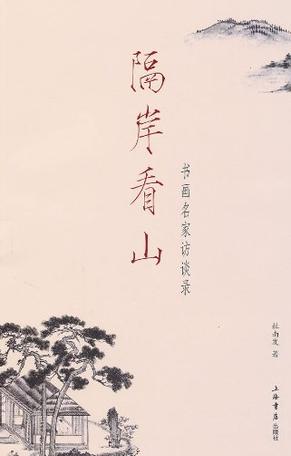8月31日
波特萊爾(Charles Pierre Baudelaire)
(西元1821.4.9—1867.8.31)
法國詩人。象徵派詩歌的先驅,以詩集《惡之花》開啟現代詩的新頁。其特異的美感,曾招致當時評論界驚恐地給他「惡魔詩人」的封號。另有散文詩集《巴黎的憂鬱》。
正因為詩歌來自天賦,所以偉大!
不管是歡愉的,不管是悲傷的,詩歌自有其如神般追尋理想的性格。詩歌永遠與事實相違,否則它只有死亡一途。在牢獄中,詩歌成為暴力;在醫院的窗邊,詩歌燃起痊癒的希望;在破敗骯髒的屋頂閣樓裡,詩歌如仙女般,展現出華麗且優雅的身段。詩歌不只是用來確認,而是負起重建的使命。無論在何處,詩歌都會否定叛道離經。
節自《皮爾‧都龐詩歌集》〈序文〉1855
Chants Et Chansons (Poésie Et Musique) de Pierre DuPont
1821–70).
Famous French o
uvrierpoète who attracted the admiration and patronage of important writers (including Sand and Baudelaire) and whose celebrity reached its peak during the Revolution of 1848. Baudelaire famously ...
From: Dupont, Pierre in The New Oxford Companion to Literature in French »
***
À une Mendiante rousse (To a Mendicant Redhead)
I claim that Édouard Manet’s painting The Street Singer (1862) has ties to Charles Baudelaire’s poem “À une mendiante rousse.” The poem was included in the 1857 edition of Les Fleurs du mal and became a part of the Tableaux Parisiens in 1861. The young waif who inspired Baudelaire also found herself limned in a poem by Théodore de Banville, celebrated in a song by Pierre Dupont, and painted in oil by Émile Deroy in the mid-1840s at a time when these four men were in close contact with one another in the heady days of their bohemian youth on the cusp of their creative careers. Baudelaire’s memories of the formative years of these friendships of the 1840s were resurrected when he took on the commission to write essays on Banville and Dupont for Eugène Crépet’s anthology Les Poètes français, conceived in 1859 and published in 1862, the year Manet created his version of a street singer. These texts in all likelihood combined with Manet’s own interest in fashion to play a part in his decision to outfit his street singer in attractive attire, but inspiration from Banville’s “À une petite Chanteuse des Rues,” Dupont’s “La Joueuse de guitare,” and Baudelaire’s “À une mendiante rousse” may also have affected Manet’s sartorial designs for his painting. I also demonstrate that the discourse surrounding street songs and their aesthetic import proved even more pertinent to Manet’s choice of subject as he forged his modernist painting.
----
The Street Singer is an 1862 oil-on-canvas painting by Édouard Manet depicting a female street musician near the entrance to a cabaret. It measures 171.1 x 105.8 cm (69 x 43 in.) and is in the Museum of Fine Arts, Boston.
The painting was directly inspired by a meeting between the artist and a street singer one night. Manet asked her to pose for him but she refused, so Manet asked a favorite model, Victorine Meurent, to pose for the work. The Street Singer is either the first or second of Manet's several large-scale paintings for which Meurent posed.[1][2] It depicts an itinerant singer in fashionable dress leaving a cabaret by night, clutching a guitar and eating cherries.[3] The style of the painting shows the influence of Frans Hals and Spanish masters such as Diego Velázquez.[2]
The Street Singer is one of a series of single-figure compositions Manet painted during the 1860s in which he depicted contemporary "types" at life size, upsetting the convention that such humble genre subjects be painted at a small scale.[2] The art historian George Mauner says the woman's confrontational stare and her awkward grasp of the cherries and the guitar, "which seems almost too bulky for her to manage comfortably", produces a self-conscious effect that is unexpecting in a genre painting.[1]
The painting was donated to the Boston Museum of Fine Arts in 1966.[4]
References[edit]
- ^ a b Mauner, G. L., & Loyrette, H. (2000). Manet: The Still-life Paintings. New York: H.N. Abrams in association with the American Federation of Arts. p. 17. ISBN 0-8109-4391-3.
- ^ a b c Manet, Édouard, Mary Anne Stevens, and Lawrence W. Nichols (2012). Manet: Portraying Life. Toledo: Toledo Museum of Art. p. 197. ISBN 9781907533532
- ^ "Street Singer - Edouard Manet". Google Arts & Culture.
- ^ "Street Singer". collections.mfa.org.
8月29日0829
梅特林克(Maurice Polydore Marie Bernard Maeterlinck)
(西元1862.8.29—1949.5.6)
比利時詩人、劇作家與散文家。擅以象徵性的手法,處理死亡以及生命意義的主題。曾獲1911年的諾貝爾文學獎。知名代表作為《青鳥》。
吉爾與梅蒂:「光,不要、不要、不要走呀!求求你留在這裡!」
光:「乖,你們別哭呀。我不會像水那樣發出聲音,只會射出人類所不懂的光芒而已。不過,我會守護著人類,直到他們死去。不管是在皎潔的月光中、閃閃發亮的星光中、每天升起的朝陽中、每晚點亮的桌燈中,還有在你們靈魂裡的了不起想法中,不論在任何地方,我都會在那兒和你們說話的,請不要忘記喔。」~節自《青鳥》
*****
8月28日
富永 仲基
(正德5—延享3.8.28∕西元1715—1746.10.12)
日本江戶時代後期的平民學者。曾於大阪商家設立的學堂懷德堂研究學問,之後被逐出師門。基於儒學的實踐精神,批評當時的儒、佛、神道未因地制宜。代表作為《翁之文》。
即令相距五里、十里的鄰近城鄉之風俗,亦難以因襲模仿,遑論學習漢朝與天竺之事;即令僅僅五年、十年前的近事,已鮮少有人記得清楚,遑論要將日本開國前之神代之事,拿來現代之世學習,實乃萬不可行,愚蠢至極之事也。即便將它仔細學習至分毫不差,亦非人所當為,況亦非於今之世所能接受者也。故此三教之道,皆不應為今世日本當行之道。不當行之道,乃非道也,此三教皆非真正之道也。
節自《翁之文》




